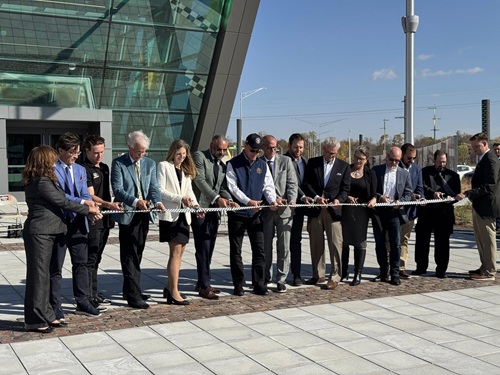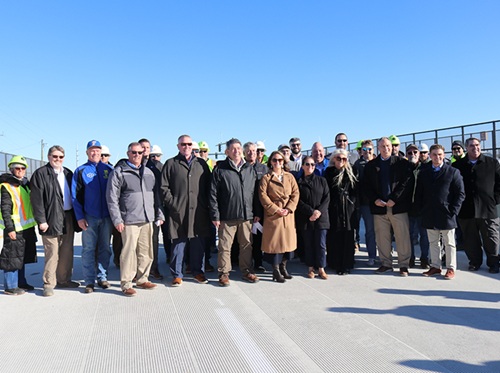Utah Governor-Elect Spencer Cox (R) reappointed Carlos Braceras (seen above) as executive director of the Utah Department of Transportation, which employs 1,700 and is responsible for the design, construction and maintenance of Utah’s 6,000-mile system of roads and highways.
“Transportation is such a critical element in establishing and enhancing our quality of life,” Governor-Elect Cox said in a statement. “There’s no one I trust more than Carlos to perform this essential job.”

Originally appointed Utah DOT’s executive director by outgoing Gov. Gary Herbert (R) in 2013, Braceras joined the agency in 1986 and during his career served as the agency’s deputy director for 12 years as well as its chief geotechnical engineer, chief value engineer, a member of the Legacy Parkway/I-15 North Project team, and a roadway design engineer.
He is also a member of the board of directors and past-president of the American Association of State Highway Officials, currently chairing the AASHTO Design Committee.
Braceras also currently serves as executive board chair for the Transportation Research Board and is past president of the Western Association of State Highway Transportation Officials and past chair of the Intelligent Transportation Society of America.
“I am humbled by the trust placed in me by Governor-Elect Cox to continue this important work,” Braceras said. “The opportunity to help our communities is what makes all of us at UDOT get up and go to work every day. We like to say we bleed orange, and we mean it. I’m delighted to be able to continue to do so.”

Following his reappointment, Braceras tapped Lisa Wilson to be Utah DOT’s new deputy director of engineering and operations – in charge of the department’s project development and operations divisions, as well as its four statewide regional offices.
Wilson’s appointment also means that for the first time in Utah DOT’s history it will be led by two female deputy directors as Braceras named Teri Newell deputy director of planning and investment in 2018.
Utah DOT noted in a statement that Wilson’s appointment also “reflects an ongoing focus by the department to promote gender equity in leadership positions,” in order to provide “new ideas and perspectives” that are needed to meet the Utah’s future transportation needs.

Such future transportation needs also include increasing internet connectivity for the state’s rural residents – and Utah DOT is now in the final stages of installing fiber conduit systems in two rural locations that not only increase internet connectivity but enhance mobility and safety on Utah’s highways as well.
State legislators recently allocated $30 million of Coronavirus Aid, Relief, and Economic Security or CARES Act funding to the Utah DOT to support the construction of roadway fiber optic infrastructure along I-70 and I-84 to beef up broadband connectivity for Utah’s rural communities.
Additionally, the agency is extending the fiber conduit to specific locations within the communities to provide Wi-Fi hotspots to allow individuals in specific areas to get high-speed internet access for their needs.
“Providing these Wi-Fi hotspots to connect rural communities to online resources could not have come at a more essential time,” noted Lynne Yocom, Utah DOT’s fiber optics manager, in a statement. “This fiber network will make an immediate impact, but also lay the groundwork for a connected future.”
 States
States
INDOT Celebrates New I-70 Welcome Center Opening
November 21, 2025 States
States

